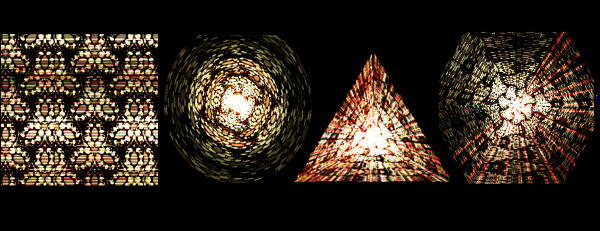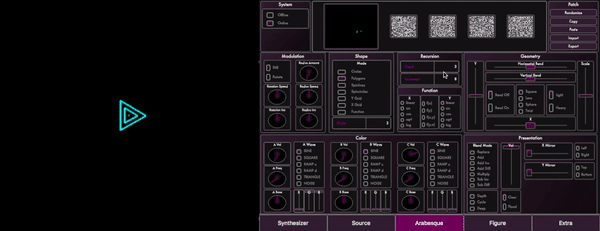Basic Features
Cathodemer is divided into five different video generating and altering parts that can be layered and mixed together with various blending options
Most parameters can be mapped to MIDI CC numbers with MIDI Learn, or to audio input channels that are interpreted into parameter values.
Realtime video output can be projected to video projector, rendered into video files or sent to other applications with Syphon or Spout frame sharing.
CRT Screen Simulator

The virtual CRT display simulates imperfect analog screen with many possible resolutions from highly pixelated to high definition, with standard and various exotic display shapes and geometries.
Synthesizer

The Synthesizer features six RGB oscillators for generating video signal from basic waveforms.
Five parameter slots can be switched instantly or faded from one to another.
Source

The Source features five input sources that receive video signal from video files, USB cameras and network streams.
Source signals can be altered with various transformations and alpha channeling.
Video files can be looped at defined points.
Arabesque

The Arabesque features five individual recursion-based systems that generate animation from basic geometric shapes and mathematical functions.
Three RGB oscillators generate the shape colouring.
Figure

The Figure features five individual parts of an animated sprite engine.
Each part can have multiple frames for animation, alpha channel and LFOs for it's position and size.
The frames can be hand-drawn with simple internal bitmap editor or loaded from picture or animation files.
Figures can be presented in three different modes: Sprite, Pattern and Fractal.
Unicode text can be rendered on to frames with defined sizes and fonts.
Extras

The Extras part features two oldschool-style visual generators and video processors that distort, pixelmask, barrel and blur the final video output.
The OpenGL CRT surface has various settings for defining the simulated screen.
The final output video can also be converted to audio signal.
